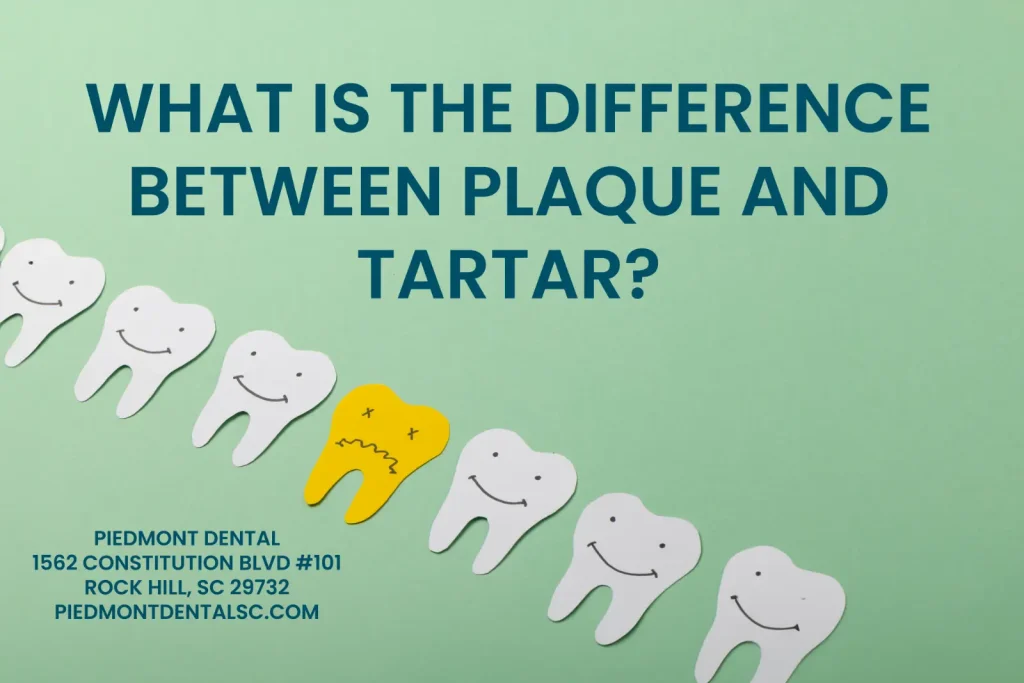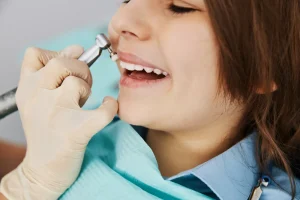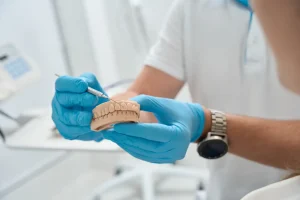
What is the difference between a family dentist and a pediatric dentist?
What is the Difference Between a Family Dentist and a Pediatric Dentist? Navigating the world of dental care can sometimes be confusing, especially when deciding

We often hear about the importance of maintaining good oral health, but have you ever wondered what distinguishes plaque from tartar? To have a brilliant smile and healthy teeth, it is essential to comprehend these two dental enemies. To better understand plaque and tartar, learn how to prevent them, and understand the value of both at-home care and professional dental checkups, let’s set out on a voyage.
Plaque and tartar are live organisms that have a significant impact on your oral health; they are not just dentistry jargon. A variety of dental problems, including cavities, gingivitis, and even periodontitis, a severe type of gum disease, can result from failing to distinguish between them, including periodontitis. So let’s examine the key differences between these two offenders as we dive into dental care.
This article will discuss plaque and tartar, how they develop, and how they affect your dental health. We will also go into the indications and symptoms to watch out for, and most importantly, how to prevent and manage them. This thorough manual will provide you with the knowledge you need to keep a happy, healthy smile, whether you’re brushing up on your dental knowledge or looking for methods to improve your oral hygiene practice.
The first enemy in the fight for good dental health is plaque. On your teeth and gums, a soft, sticky film of bacteria may build up. The first step in eliminating plaque’s effects on your dental health is understanding its nature. Bacteria that join together to form plaque can be found on your tongue, gums, teeth, and throughout your mouth. It appears as a slimy, sticky, clear, or yellow film on the surfaces of your teeth.
 Tartar appears on the teeth as a hard, yellow, or brown deposit, in contrast to soft, sticky plaque. Dental calculus, sometimes referred to as tartar, is the next development after plaque and a more threatening foe in the fight for good oral health. It’s important to comprehend how plaque turns into tartar and why this requires specialized dental care.
Tartar appears on the teeth as a hard, yellow, or brown deposit, in contrast to soft, sticky plaque. Dental calculus, sometimes referred to as tartar, is the next development after plaque and a more threatening foe in the fight for good oral health. It’s important to comprehend how plaque turns into tartar and why this requires specialized dental care.
Plaque develops when bacteria in your mouth interact with food particles, particularly those that are high in sugar and carbohydrates. Plaque is created when these bacteria make acids and feed on the sugar in your diet. Plaque can build shortly after brushing and flossing, within hours. Plaque can calcify or harden, eventually becoming tartar if it is not treated.
Tartar is a hardened plaque that needs expert care. Both the exposed surfaces of teeth and the area below the gum line are susceptible to tartar buildup. Only a dental professional can remove this mineralized form of plaque.
Plaque can harden if regular brushing and flossing routines are not followed. Lifestyle decisions like smoking, eating a lot of sweets, and being under a lot of stress can cause plaque to turn into tartar. Plaque that is left behind from missed dental checkups is difficult for you to remove with your usual brushing and flossing routines.
 Chronic contact with plaque bacteria can cause gum inflammation, which manifests as bleeding, discomfort, and redness in the gums. Gingivitis is a mild form of gum disease that can develop from inflammation if it is left untreated. Plaque removal is essential for preventing gum disease and lowering the risk of developing tartar and other chronic conditions.
Chronic contact with plaque bacteria can cause gum inflammation, which manifests as bleeding, discomfort, and redness in the gums. Gingivitis is a mild form of gum disease that can develop from inflammation if it is left untreated. Plaque removal is essential for preventing gum disease and lowering the risk of developing tartar and other chronic conditions.
There are many things you can do at home to prevent plaque and halt the transition to tartar, so maintaining your oral health is not only the job of dental experts. Let’s examine the methods and procedures for removing plaque and avoiding tartar accumulation.
You can significantly reduce the likelihood of plaque forming and turning into tartar by implementing these at-home routines and scheduling routine dental exams.
Tartar is quite resistant to conventional brushing and flossing because of how hardened it is. Enamel damage might result from DIY removal methods. Tartar also builds up below the gum line and on the exposed tooth surfaces, making it difficult to access and remove without specialist instruments.
During tooth cleanings, dentists use specialized tools and methods to remove tartar safely and efficiently.
 It’s important to realize that the best way to deal with tartar is to have a dental professional handle this hardened form of plaque. Tartar removal at home can be dangerous and ineffective. Let’s discuss the need for professional tartar removal and what to anticipate from a dental cleaning.
It’s important to realize that the best way to deal with tartar is to have a dental professional handle this hardened form of plaque. Tartar removal at home can be dangerous and ineffective. Let’s discuss the need for professional tartar removal and what to anticipate from a dental cleaning.
Dental scaling: Scaling is a procedure carried out by dental experts that entails removing plaque and tartar from the tooth’s surface, including below the gum line.
Root planing: A dental procedure known as root planing may be suggested in situations of substantial tartar buildup below the gum line to stop future accumulation.
Full-Service Cleaning: Additionally, polishing is done during dental cleanings to remove surface stains and make teeth smoother, which decreases the likelihood that plaque and tartar will adhere.
Your general health and dental health are related. Gum disease, which frequently results from plaque and tartar buildup, has been linked to major medical diseases like diabetes and cardiovascular disease. Both daily home care and professional dental care are crucial. Plaque and tartar are effectively managed through routine dental checkups and cleanings, lowering the risk of dental and general health issues.
As we come to the end of our discussion on the distinctions between plaque and tartar, it’s important to consider the critical role that your dental health plays in your overall health. A healthy smile reflects your dedication to upholding good health and goes beyond just being aesthetically pleasing.
If you are in need of a routine teeth cleaning appointment give Piedmont Dental a call and schedule your appointment today!

What is the Difference Between a Family Dentist and a Pediatric Dentist? Navigating the world of dental care can sometimes be confusing, especially when deciding

Do Family Dentists Do Root Canals? When individuals think about their dental care needs, especially in terms of specialized procedures, they might often wonder: do

How Much to Fill a Cavity? The question, “How much to fill a cavity?” is one that many people find themselves asking when planning a

What is the Most Difficult Dental Procedure? When it comes to dental care, various procedures are geared towards maintaining oral health and aesthetics. However, not

What is a Dentist Called Medically? When discussing oral health professionals, the terminology can get a bit confusing, especially when considering the variations used in

What Causes a Root Canal? Understanding what causes a root canal is pivotal for maintaining optimal oral health. A root canal, often misunderstood, is a